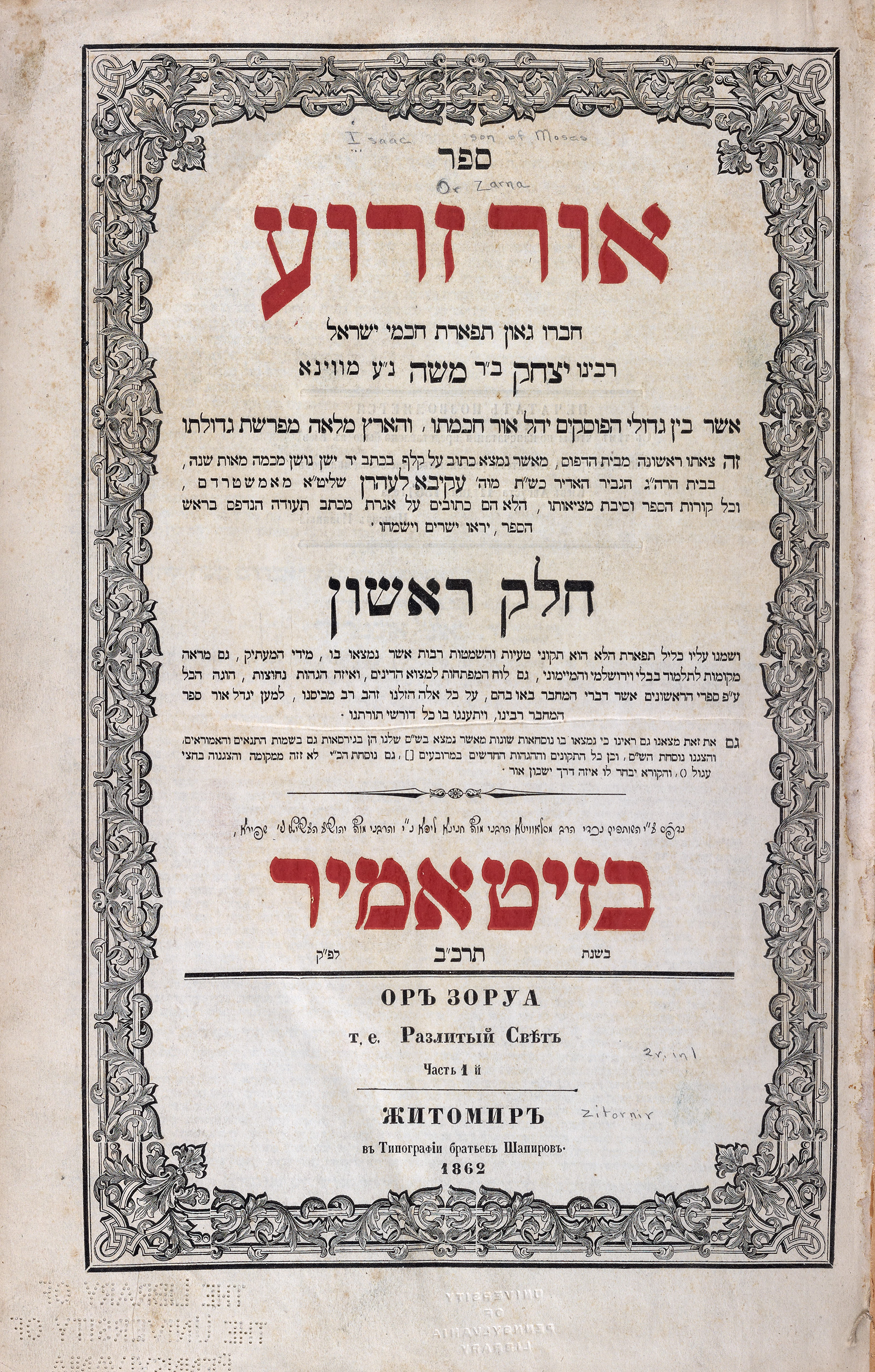Rabbi Isaac b. Moses (d. c. 1250) appears to have hailed from Bohemia. He studied in both Germany and northern France with a bevy of the leading Tosafist glossators of his day, including Simhah ben Samuel of Speyer, Eliezer b. Joel (Rabiah) ha-Levi of Cologne, Judah b. Isaac Sirleon of Paris, and Samson of Coucy, and he also studied with the founder of the German Pietists, Judah b. Samuel the Pious. The geographic diversity of Isaac's teachers, which renewed a trend that dated from the mid-twelfth century in Ashkenazic lands but had become attenuated for a period of about forty years (c. 1175-1215), gave Isaac access to both the German and north French centers of Tosafist endeavors, and to a rich array of their writings in the fields of talmudic commentary and Jewish law.
Not surprisingly, Isaac's magnum opus, Sefer Or Zaru'a, is a large and discursive work that covers a wide range of legal topics. The sheer size of the work caused Isaac's son, Hayyim, to comprise a rather drastic abridgement, and also helps to explain the seeming unavailability of this work for a period of close to 400 years, until the first phase of its publication in Zhitomir in 1862.
Isaac was a careful recorder of his teachers' rulings and religious practices, and of the challenges that they and their predecessors faced in their respective communities. Isaac mentions in passing the forms or ornaments that had to be displayed on one's clothing
